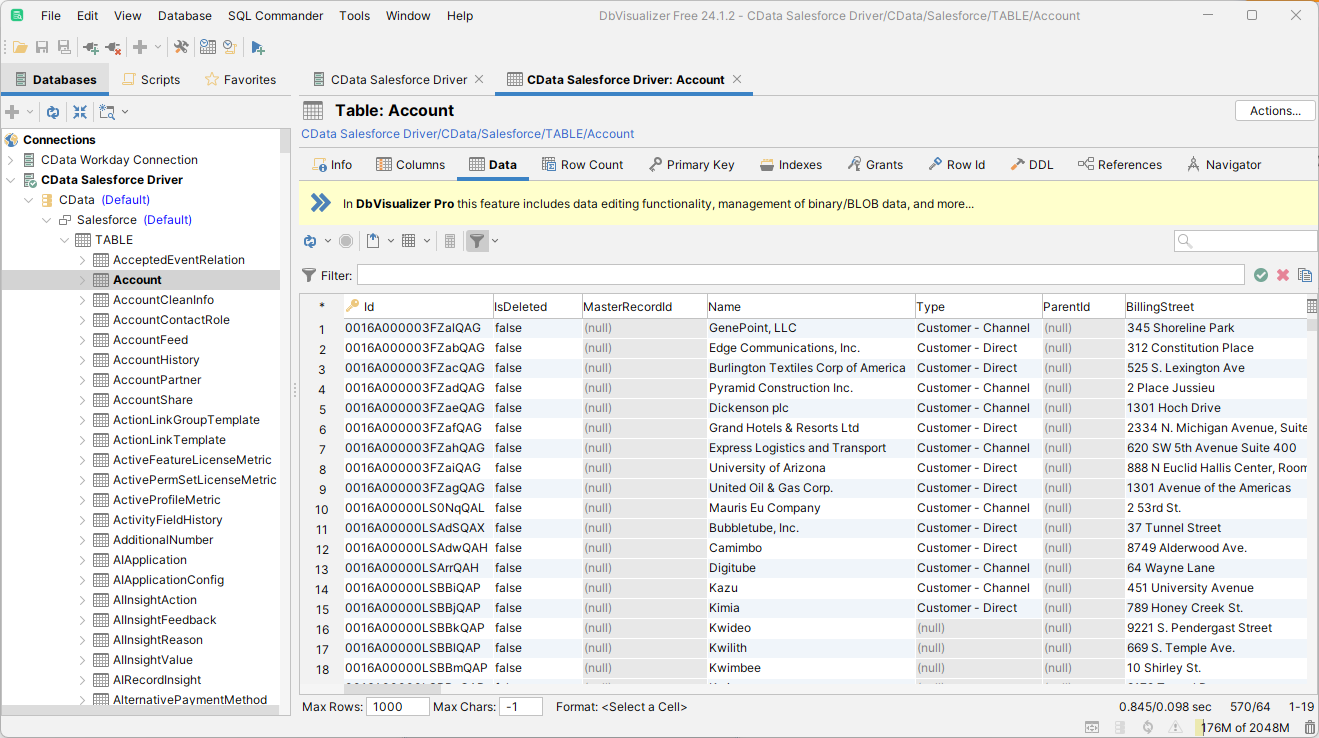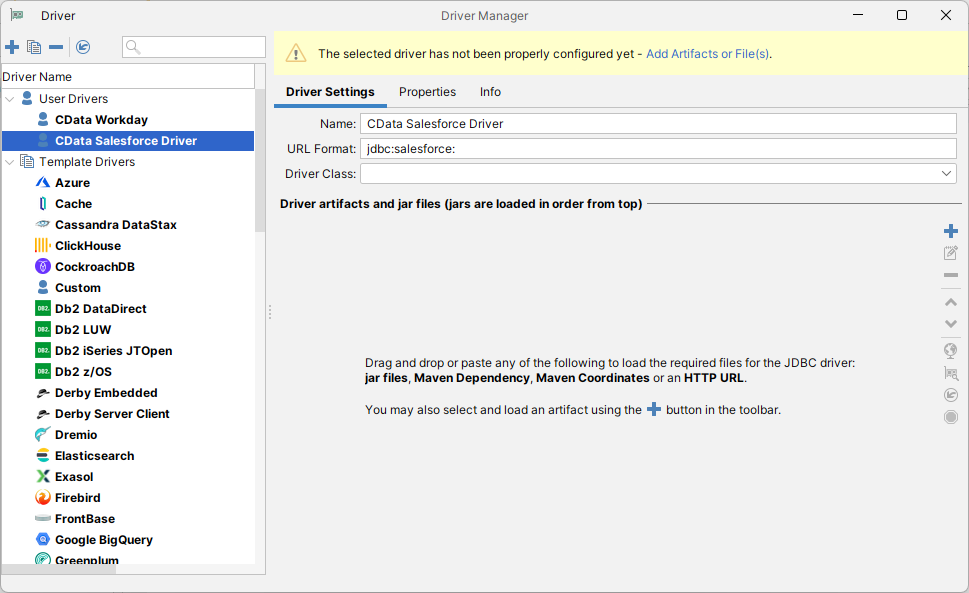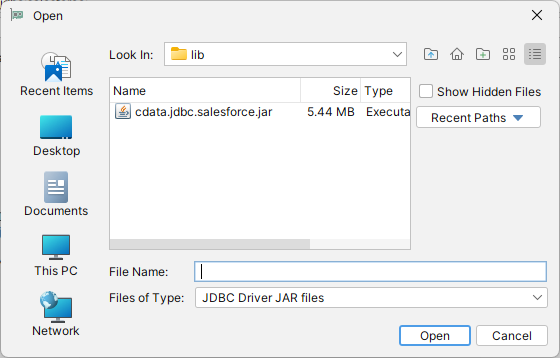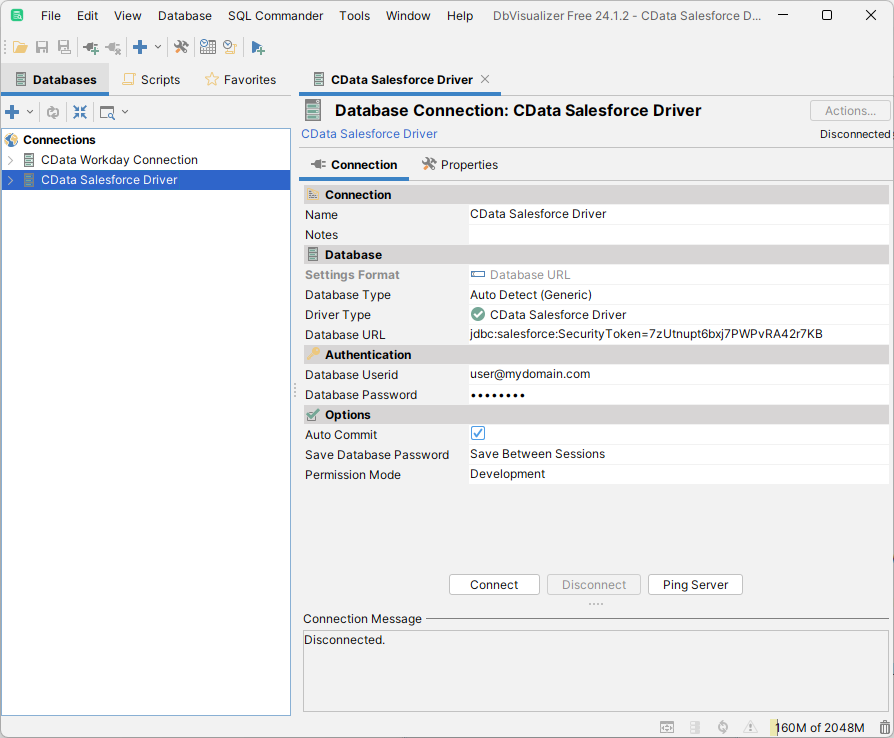Discover how a bimodal integration strategy can address the major data management challenges facing your organization today.
Get the Report →How to connect to Epicor Kinetic Data in DBVisualizer
Integrate Epicor Kinetic data with visual data analysis tools and data connection wizards in DBVisualizer
The CData JDBC Driver for Epicor Kinetic implements JDBC standards to provide connectivity to Epicor Kinetic data in applications ranging from business intelligence tools to IDEs. This article shows how to establish a connection to Epicor Kinetic data in DBVisualizer and use the table editor to edit and save Epicor Kinetic data.
Create a New Driver Definition for Epicor Kinetic Data
Follow the steps below to use the Driver Manager to provide connectivity to Epicor Kinetic data from DBVisualizer tools.
- In DBVisualizer, click Tools -> Driver Manager.
- Click the plus sign "" to create a new driver.
- Select "Custom" as the template.
- On the Driver Settings tab:
- Set Name to a user-friendly name (e.g. "CData Epicor Kinetic Driver")
- Set URL Format to jdbc:epicorkinetic:
![Setting the Driver Settings (Salesforce is shown).]()
- In Driver artifacts and jar files (jars are loaded in order from top):
- Click the plus sign "" -> "Add Files"
- Navigate to the "lib" folder in the installation directory (C:\Program Files\CData[product_name] XXXX\)
- Select the JAR file (cdata.jdbc.epicorKinetic.jar) and click "Open"
![Loading the driver JAR file.]()
- The Driver Class should populate automatically. If not, select class (cdata.jdbc.epicorkinetic.epicorKineticDriver).
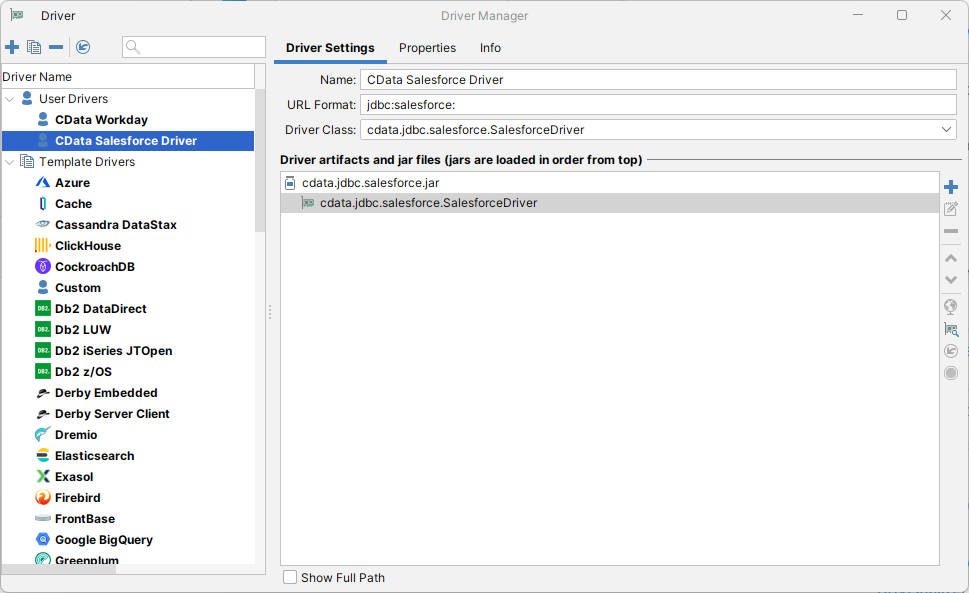
Define the Connection to the JDBC Data Source
Close the "Driver Manager" and follow the steps below to save connection properties in the JDBC URL.
- In the "Databases" tab, click the plus sign "" and select the driver you just created.
In the "Connection" section, set the following options:
- Database Type: If you selected the wizard option, the database type is automatically detected. If you selected the "No Wizard" option, select the Generic or Auto Detect option in the Database Type menu.
- Driver Type: Select the driver you just created.
Database URL: Enter the full JDBC URL. The syntax of the JDBC URL is jdbc:epicorkinetic: followed by the connection properties in a semicolon-separated list of name-value pairs.
To successfully connect to your ERP instance, you must specify the following connection properties:
- Url:the URL of the server hosting your ERP instance. For example, https://myserver.EpicorSaaS.com
- ERPInstance: the name of your ERP instance.
- User: the username of your account.
- Password: the password of your account.
- Service: the service you want to retrieve data from. For example, BaqSvc.
In addition, you may also set the optional connection properties:
- ApiKey: An optional key that may be required for connection to some services depending on your account configuration.
- ApiVersion: Defaults to v1. May be set to v2 to use the newer Epicor API.
- Company: Required if you set the ApiVersion to v2.
Built-in Connection String Designer
For assistance in constructing the JDBC URL, use the connection string designer built into the Epicor Kinetic JDBC Driver. Either double-click the JAR file or execute the jar file from the command-line.
java -jar cdata.jdbc.epicorkinetic.jarFill in the connection properties and copy the connection string to the clipboard.
![Using the built-in connection string designer to generate a JDBC URL (Salesforce is shown.)]()
When you configure the JDBC URL, you may also want to set the Max Rows connection property. This will limit the number of rows returned, which is especially helpful for improving performance when designing reports and visualizations.
A typical connection string is below:
jdbc:epicorkinetic:Service=Erp.BO.CustomerSvc;ERPInstance=MyInstance;URL=https://myaccount.epicorsaas.com;User=username;Password=password;InitiateOAuth=GETANDREFRESH- NOTE: Database Userid and Database Password correspond with the User and Password properties for Epicor Kinetic.
- On the Connection tab, click Connect.
![A newly configured Database Connection. (Salesforce is shown.)]()
To browse through tables exposed by the Epicor Kinetic JDBC Driver, right-click a table and click "Open in New Tab."
To execute SQL queries, use the SQL Commander tool: Click SQL Commander -> New SQL Commander. Select the Database Connection, Database, and Schema from the available menus.
See the "Supported SQL" chapter in the help documentation for more information on the supported SQL. See the "Data Model" chapter for table-specific information.
